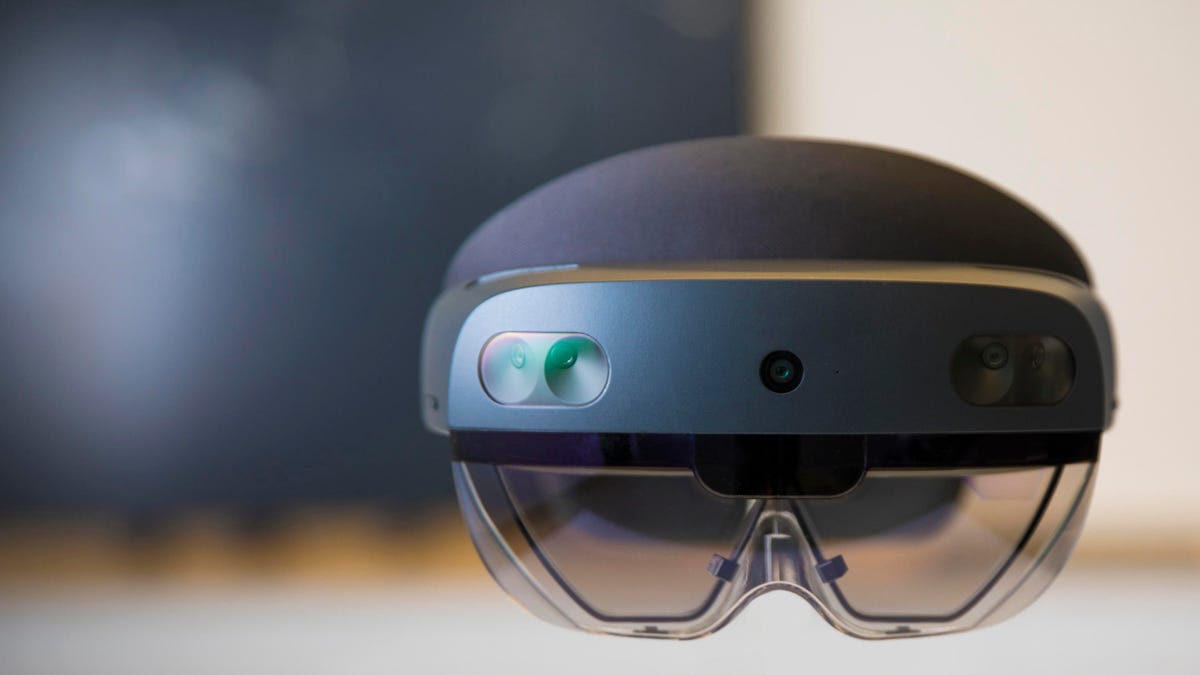Army's version of Microsoft's HoloLens AR goggles likened to Call of Duty
Specially modified version of the AR goggles has a video game feel, writes a CNBC reporter who got a demo.

Microsoft unveiled the HoloLens 2 augmented reality glasses in February.
The US Army's specially modified version of Microsoft's HoloLens 2 headsets resembles a real-life version of the first-person shooter video game Call of Duty, according to a CNBC reporter who got a first-hand look at how the Army is using the augmented reality technology.
Microsoft won a $480 million contract in November to supply the US Army with prototype HoloLens augmented reality systems for use in combat missions and training as part of a program to "increase lethality by enhancing the ability to detect, decide and engage before the enemy." The contract could eventually lead to the military purchasing over 100,000 AR headsets.
Called IVAS (Integrated Visual Augmentation System), the military's version of the headset provides an immersive AR environment -- the best that CNBC's Todd Haselton said he's experienced. Unlike virtual reality, which immerses goggle-wearing users in digital worlds, AR overlays images and data atop views of the real world.
Hatelton said the test unit he used was "a bit buggy" and had to be restarted during his demonstration, but it still provided an idea of how the Army intended to use the technology. The unit gave Haselton a bird's-eye view of his location in a building, as well as another building nearby.
An arrow icon representing his location turned when he turned his head, and dots on his visor screen showed him the location of other headset-wearing "squad members." A compass shows him what direction he's moving, and waypoints are marked in different degrees.
In short, Haselton said the experience reminded him of video game play.
"The whole experience felt natural to me, as I've played lots of first-person shooter video games that show me exactly where I am on a map, where my teammates are and where the enemy is," he wrote. "It was almost like a real-life game of Call of Duty."
The military also has non-battlefield plans for the IVAS. Under Secretary of the Army Ryan McCarthy told Haselton that the technology can be used to gather data on soldiers during training, such as their heart rate. The headsets can also be used to improve their marksmanship.
The current version of IVAS is too large to work with helmets, but the military expects to shrink the size of the units to the size of a pair of sunglasses within six months, Haselton wrote.
Big tech companies' work with the US military has raised questions among their employees about the ethics of supplying technology that will be used in warfare. In October, Google walked away from bidding on a huge Defense Department project because of employee objections to the company's prior involvement with Project Maven and the possibility that the project may not align with Google's principles for ethical use of artificial intelligence.
Microsoft's CEO Satya Nadella defended his company's work with the military in February after a group of employees published an open letter calling on the company to ditch the multimillion dollar contract. Nadella framed the work as being a responsible corporate citizen in the US.
"We made a principled decision that we're not going to withhold technology from institutions that we have elected in democracies to protect the freedoms we enjoy," he said in an interview with CNN Business.
The Defense Department didn't immediately respond to a request for comment.

